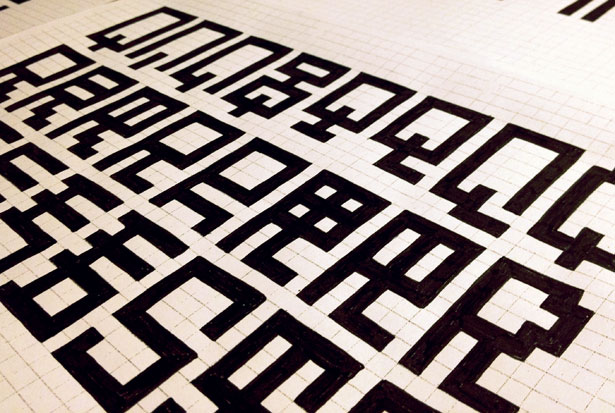Six type design tricks
HypeForType’s Alex Haigh shares his insider tips for creating and developing the perfect font
Earlier this year, we followed HypeForType founder Alex Haigh and type developer Dawn Lewandowski through the entire process of how to design and build a fully functional geometric display font, Omega, as part of the Studio Project in Computer Arts Collection, Volume 2 Part 2: Typography – which is on sale now.
In the first half of this two-part article, HypeForType founder Haigh shares his six expert tips and tricks for designing a font....
1. Accuracy is key
When working in any vector-based program such as Illustrator, one thing to watch out for
is the accuracy of your drawings. Without using Illustrator’s maths function it’s almost impossible to get all of your characters 100 per cent exact, and more often than not the Snap To Grid function isn’t completely effective.
2. Create your grid first
Creating your letterforms accurately in vector format is a big job. Today, many type designers might happily spend a whole day working on just one single letter. Look to create your grid beforehand, so you have a foundation to begin with. Planning is absolutely essential at this stage – make sure you’re completely happy with your designs when taking them into build.

3. Obsessive detail will save time later
Taking unpolished vectors into FontLab can cause a number of problems. Not only will this bring up a flood of red flag errors, but you will also have a typeface that probably needs the same amount of work in FontLab as it did in Illustrator. Complete accuracy and obsessive attention to detail is a must during the Illustrator phase, as this will save time when taking vectors through to FontLab.
4. Get your fonts built professionally
Personally, I prefer to leave font development to the professionals. I create sketches that are as accurate as possible, and then pass the designs on to Dawn Lewandowski. If you’re serious about launching a typeface into the market, and you feel it has great potential to sell, then professional development is a must.

5. Know your audience
When you’re working on your typeface, ask yourself who it’s intended for. If it’s something you would like to sell worldwide then you’ll need to consider including accented characters or even alternative scripts. If it’s simply something you want to play around with for a design project, then by all means just create and build the characters you need.
Daily design news, reviews, how-tos and more, as picked by the editors.
6. Put your experiments out there
Many designers have folders full of type experiments. These are crucial pieces of work that could end up being more than worthwhile in terms of the time and effort you initially put into them. Get advice on your designs and, once they’ve been professionally built, see if you have anything that designers may be interested in buying to use in their projects.
In part two, we bring you type developer Dawn Lewandowski's six expert tricks to streamline the font production process in FontLab.
Buy print or digital editions of CA Collection
Print: Subscribe or buy a single issue.
iPad or iPhone: UK - http://goo.gl/NXT8q or US - http://goo.gl/QTiKi
Zinio: Subscribe or buy a single issue




The Creative Bloq team is made up of a group of art and design enthusiasts, and has changed and evolved since Creative Bloq began back in 2012. The current website team consists of eight full-time members of staff: Editor Georgia Coggan, Deputy Editor Rosie Hilder, Ecommerce Editor Beren Neale, Senior News Editor Daniel Piper, Editor, Digital Art and 3D Ian Dean, Tech Reviews Editor Erlingur Einarsson, Ecommerce Writer Beth Nicholls and Staff Writer Natalie Fear, as well as a roster of freelancers from around the world. The ImagineFX magazine team also pitch in, ensuring that content from leading digital art publication ImagineFX is represented on Creative Bloq.
